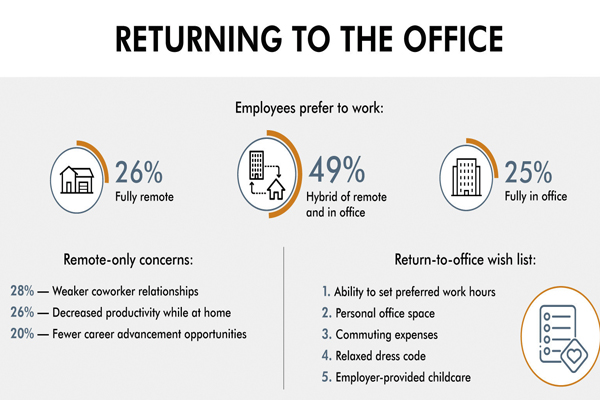One in three workers may quit if required to return to the office on a full time basis, confirmed a new Robert Half study.
Around 34% of staff currently working from home due to the pandemic would look for a new job if required to be in the office full time, according to the findings of a study carried out by the global staffing firm, which reveals employees’ ideal work environment and feelings about returning to the office full time.
Nearly half of all employees surveyed (49%) said they prefer a hybrid work arrangement, where they can divide time between the office and another location. Staff are unlikely to want a fully remote working arrangement for several reasons. They include concerns that relationships with coworkers may suffer (28%); followed by decreased productivity while at home (26%); as well as fewer career advancement opportunities due to a lack of visibility (20%).

WELCOMING STAFF BACK
“After a year of drastic change, many business leaders are eager to restore a sense of normalcy and welcome staff back to the office,” stated Paul McDonald, Senior Executive Director at Robert Half. “But reopening doors will bring new obstacles for companies to navigate. Not all employees will be ready – or willing – to return to the workplace, so staying flexible and responsive to their needs will be critical.”
Regardless of timing, “companies should take a measured and carefully planned office re-entry approach and keep employees’ health and safety top of mind”, McDonald added. “Leaders should also use the opportunity to solicit staff feedback to shape corporate culture for the future.”

EASING THE TRANSITION
Employers should consider ways to help ease staff transition back on-site. Some of the most popular ways to support staff, cited by workers in the study, include:
- Freedom to set preferred office hours .
- A personal, distraction-free workspace.
- Employer-paid commuting costs .
- Relaxed dress code.
- Employer-provided childcare.
According to another study, the majority of employees worldwide expect their jobs to be partly remote after the pandemic ends. However, the desire for a fully remote working set-up is generally low. Read more here.







































